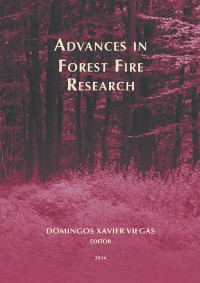Please use this identifier to cite or link to this item:
https://hdl.handle.net/10316.2/34336| Title: | Impacts of climate change on the fire regime in Portugal | Authors: | DaCamara, Carlos C. Pereira, Mário G. Calado, Teresa J. Calheiros, Tomás |
Keywords: | Forest fire;Climate change;GCM;Fire risk/danger | Issue Date: | 2014 | Publisher: | Imprensa da Universidade de Coimbra | Journal: | http://hdl.handle.net/10316.2/34013 | Abstract: | Wildfires in Portugal are a major problem, with about 18 500 fires and 110 000 ha burnt every year and an increasing trend of the large fires (>100 ha) during the 1980 – 2011 period. In previous studies, climate and weather conditions were identified as the most important drivers of annual total burnt area in the country which inspire assessing potential changes in the statistical distribution of the areas burnt by fires in the expected warmer and drier conditions of future climate. The aim of the study is therefore to project area burnt by vegetation fires in Portugal for different future climate scenarios using an appropriate Burnt Area Model (BAM). The BAM is a multiple regression model that shown to be able to simulate the burnt areas in July and August with just two predictors: the Daily Severe Rating (DSR) in the pre-fire season (May and June) and during the fire season (July and August). Then, the regression model is fed with simulated data by a Global Climate Model (GCM) respecting to present climate and to future IPCC emission scenarios B1 and A1B. It is shown that samples of observed and simulated logarithms of burnt areas follow normal distributions. Changes in measures of location and dispersion (mean and variance), from recent past to future climates, are analysed after statistically removing the effects due to the limitations of the GCM and the BAM. When comparing present climate with future climate scenario B1 (A1B), maximum increases in the averages of the decimal logarithm of July and August burnt area are of 11% (28%) while the standard deviation remaining almost unchanged for scenario B1 and presenting an increase of 25% for A1B. Obtained estimates need to be looked at with due care but the developed approach consistently points towards an increasing risk of fire under future climate conditions, inter-annual variability and likelihood of having much larger fire events. | URI: | https://hdl.handle.net/10316.2/34336 | ISBN: | 978-989-26-0884-6 | DOI: | 10.14195/978-989-26-0884-6_130 | Rights: | open access |
| Appears in Collections: | Advances in forest fire research |
Files in This Item:
| File | Description | Size | Format | |
|---|---|---|---|---|
| 978-989-26-0884-6_130.pdf | 1.62 MB | Adobe PDF |  |
Items in DSpace are protected by copyright, with all rights reserved, unless otherwise indicated.
